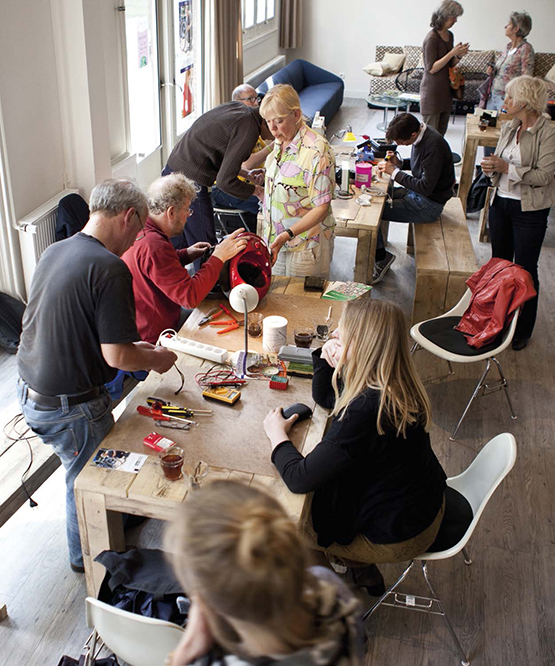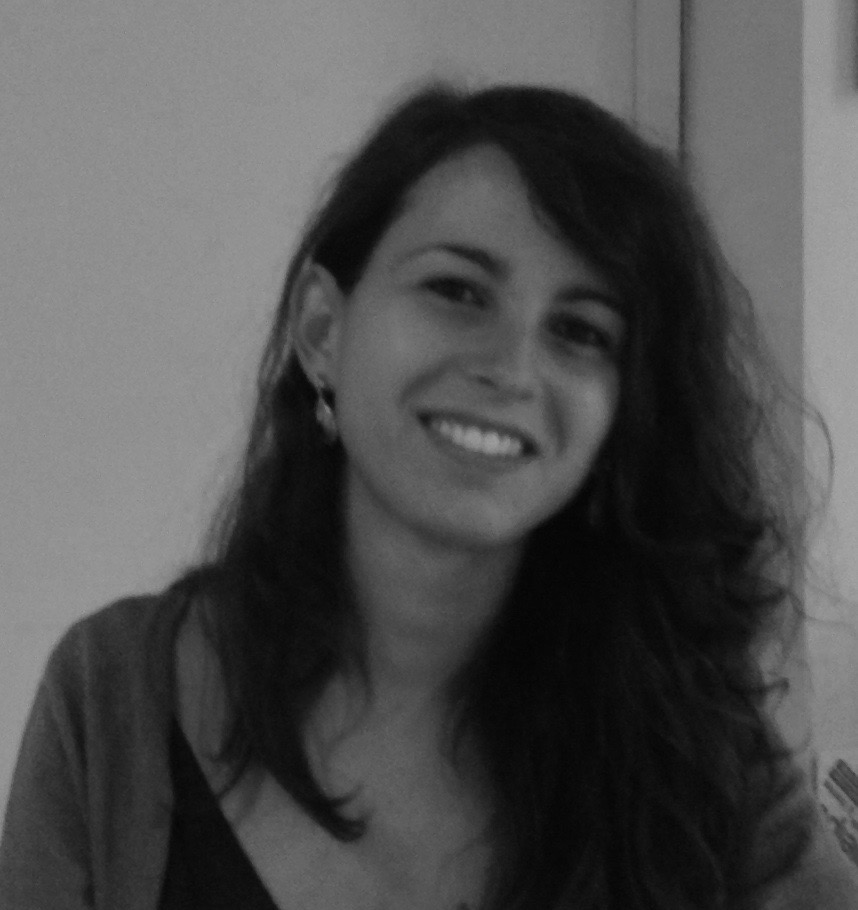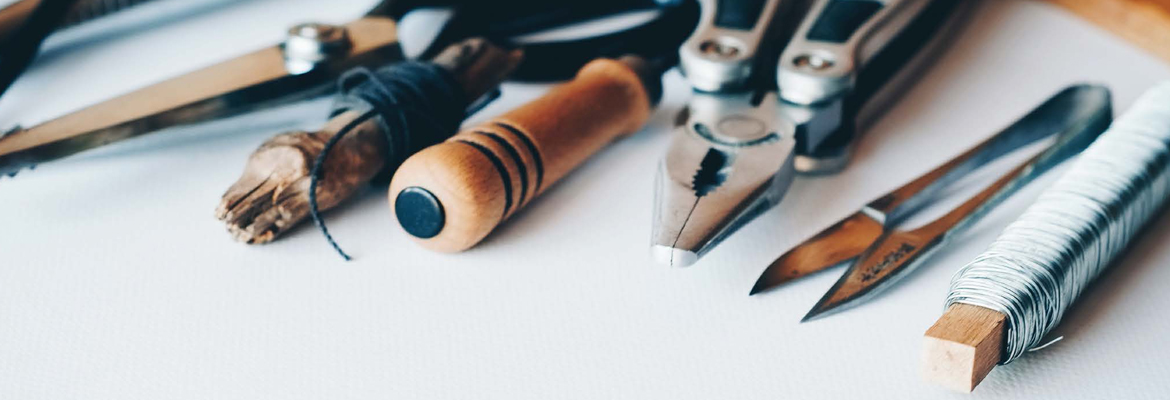 According to the Ellen MacArthur Foundation “A circular economy is one that is restorative and regenerative by design.” The big challenge for innovators and pioneers is to design products, services and businesses that are good for people, the planet and business. Over the past few years some companies have developed a Circular Design Guide. The question is: how can design actually help in the transition to a more circular economy? To better understand this on-going shift in the design and academia world, Renewable Matter interviewed professor Martin Charter, Director of The Centre for Sustainable Design® at UCA, and co-founder of the Farnham Repair Café.
According to the Ellen MacArthur Foundation “A circular economy is one that is restorative and regenerative by design.” The big challenge for innovators and pioneers is to design products, services and businesses that are good for people, the planet and business. Over the past few years some companies have developed a Circular Design Guide. The question is: how can design actually help in the transition to a more circular economy? To better understand this on-going shift in the design and academia world, Renewable Matter interviewed professor Martin Charter, Director of The Centre for Sustainable Design® at UCA, and co-founder of the Farnham Repair Café.
Martin, with many years of experience in sustainability you have developed a deep understanding of the sector. Do you see the circular economy transition as a top down or a bottom-up process?
“I think it is a complex process that requires both approaches. In Europe, the European Commission developed a Circular Economy Action Plan in 2015. Also, countries such as Finland, the Netherlands and Spain are developing long term national plans. China is revising the Circular Economy Promotion Law and Japan, that has always been one of the most advanced countries when it comes to resource efficiency and productivity, is hosting the World Circular Economy Forum this year. I see the Japanese entering the discussion through the hosting of the event. So the role of nation states is fundamental, but the bottom-up approach is also relevant. Think about the US. They haven’t participated in the discussion yet. But, the Right to Repair movement is lobbying for changes in legislation. Many bottom-up movements are pushing to give individuals and citizens the right to repair products and to move away from built-in obsolescence.”
Do you think companies will play an active role in increasing consumer awareness?
“The problem is always that some manufacturers are proactive, but many of them are reactive. Therefore, many companies will lobby to keep things the way they are. No major company likes legislation unless it benefits them. Policy can play an important role in this regard and then some companies will follow. The Circular Economy Action Plan is the start of a European standardisation process with new standards focused on repair, reuse and remanufacturing. These actions will still be voluntary, but companies can use their design and development teams, or their supply chain, to try and increase reparability and dismantlability. In the UK, interest in reparability issues is increasing continuously.”
The interest of consumers and companies is increasing. However, do you think the perception of repair and reuse has changed over the last few years?
“I have been involved in business sustainability since the late 80s and hence have a deep understanding of the topic. Things have changed a lot in the area. For example, there are now 1530 repair cafés in the world. Think about that on a global scale: each repair café is run once a month and attracts 20 to 30 people. Therefore multiply 1530 by 30 and you end up with a large amount of people visiting repair cafés all around the world. Also, if you take the 63% repair rate that we have at the Farnham Repair Café as an example and bring it to a larger scale, you understand there are quite a lot of products that are repaired through these citizen driven initiatives.
The difference is that 5 or 10 years ago these initiatives didn’t exist. That’s a fact.
Another interesting thing is that in the UK – and I don’t think of the UK as one of the greenest countries in Europe – there is now a second BBC TV series, with 10 half hour episodes, dedicated to tutorials and tips for the repair of common household objects. For the BBC to broadcast a second series about repair means that the audience has shown an interest.”
Do you think this cultural shift is common to all European countries?
“It is not happening in the same way everywhere and it is very interesting to see how these changes and citizen driven initiatives develop from a cultural perspective. 80% of the repair cafés are in Germany, Belgium and the Netherlands and I was very surprised to see that there are hardly any repair cafés in Scandinavia. It was surprising because Sweden, for example, is really green and community focused in many areas. I tried to better understand this lack of repair cafés in Sweden and maybe the explanation is that individuals in Sweden repair products at home, in workshops, or in their basements, or possibly even in maker spaces or other similar realities.”
That is from the consumer side. What about the companies?
“When we created the new standard BS2001, the first one on the circular economy, we met many companies and business leaders. The danger with companies is that often – and we saw this quite clearly in a specific case – there is no stakeholder engagement, and no real vision about what the circular economy means for the company. The key element is that it is always useful to involve and bring together people that are not familiar with the subject at least once a year. We do it with Master’s students and also with students that are above 40 or 50. They were the ones challenging me and asking what in the circular economy was new and innovative.”
What is new in the circular economy?
“For me the big picture is always sustainable development. It is a much broader perspective that has also been defined with the 17 UN Sustainable Development Goals. I see product circularity as one element of that broader picture. I don’t see it as a huge change, although organisations such as the Dutch government are presenting it as such. Rather, it is a small element in the bigger picture. In terms of the transition from linear to circular economy, circularity in businesses is a new concept and a key element even among leaders (they are not as far down the line as you would think). Of course many of these topics like repair, remanufacture, recycle are not new issues. The role of design is new, as well as bringing all the elements together in a systematic and systemic approach, and thinking about maximising value and extending the use-life of products.”
You founded the Farnham Repair Café in the UK. How important is the repair movement in the circular economy transition?
“I set up the Farnham Repair Café in the UK as a charity, one year ago. However, we have been operational for three years now. We have recruited volunteers from the local community, some are retired or semi-retired and they want to share their knowledge. The repair café is also part of the sharing economy because it is also about sharing skills. We have avoided nearly two tonnes of weight entering landfills via repair, which represent between ten and fifteen tonnes of carbon. We also saved our town’s community 45 thousand pounds by repairing old products and hence not having to buy new ones.”
 |
| Repair Café – Wikicommons/Ilvy Njiokiktjien
|
What is the main lesson you take from this experience?
“The key lesson from the Farnham Repair Café actually comes from all the data we have collected over the years. We run the Repair Café as a community initiative, but we also set it up as a living lab with which to collect a lot of data. We welcomed around 1500 people for a total of 500 to 600 products repaired. We have a 63% repair rate within 2 hours. This means that, despite the products not being designed for reparability, with the right skills, products can be repaired easily. We found that many of the issues with broken products are due to poor maintenance by users and consumers. If users and consumers were more aware and manufacturers contributed to raising awareness, products would have an extended use-life.”
Where do you think the most value is lost in the value chain? How can we maximise value?
“My experience in the Circular Ocean project has led me to think that product circularity is not about end of life. Instead, it is about an extended lifecycle perspective, with a stronger focus on the user phase of products. It is not about waste, but about how you retain value in the system for as long as possible. I’m working on a book on this topic that deals with legislation, business models, design and development and will also contain many case studies.”
What is your role in the Circular Ocean project?
“As UCA Farnham, we are one of the project’s key partners, in particular focusing on the eco-innovation of products. We researched what was going on in the port area, reviewed the products being used and through a hackathon tried to find ways of employing disused fishing nets. I am also running a monthly webinar for companies and SMEs to show how to create products from fishing nets, ropes and other materials.”
What role can universities and schools play in the circular economy?
“Education has a big role to play in terms of content and curriculum. The University for the Creative Arts (UCA) is only specialised in creative sectors like architecture and design. Many students have a big interest in sustainability, many are dealing with materials or textiles all the time, so waste and circularity are easy for them to understand.
On the other hand, sustainability and the circular economy need to be included in the core curriculum so as to get the most attention possible and be easy to access. Therefore, the Academic Board that decides what goes in the curriculum has a key role in putting circular economy and sustainability on the educational path of our students. You need a strong senior level driver. A number of universities are taking sustainability on board, especially after the UN SDGs. This aspect has parallels within universities, governments or companies, if you don’t make sustainability and the circular economy a priority it won’t get the attention it deserves and needs.”
Do you see your students gaining interest in the circular economy?“I don’t really understand millennials. They are confusing to me. They are green, but their practices are not. The Global Shapers Annual Survey 2017 conducted by the World Economy Forum, shows that climate change is a really big concern and challenge for them and also that there are many start-ups founded by millennials that put sustainability at the core of their business. On the other hand, I see students interested in what is easiest and not really planning for things. People that come to the repair cafés are, on average, 50+ and the common element is that they really don’t like to waste stuff. If they find an easy mechanism to repair products, they will use it. I don’t know if millennials share these same values because they grew up in an era of fast fashion and fast technology.”
Centre for Sustainable Design, cfsd.org.uk
Farnham Repair Café, repaircafe.org/en/locations/repair-cafe-farnham
Circular Ocean, www.circularocean.eu
Sondaggio Global Shapers, www.shaperssurvey2017.org



